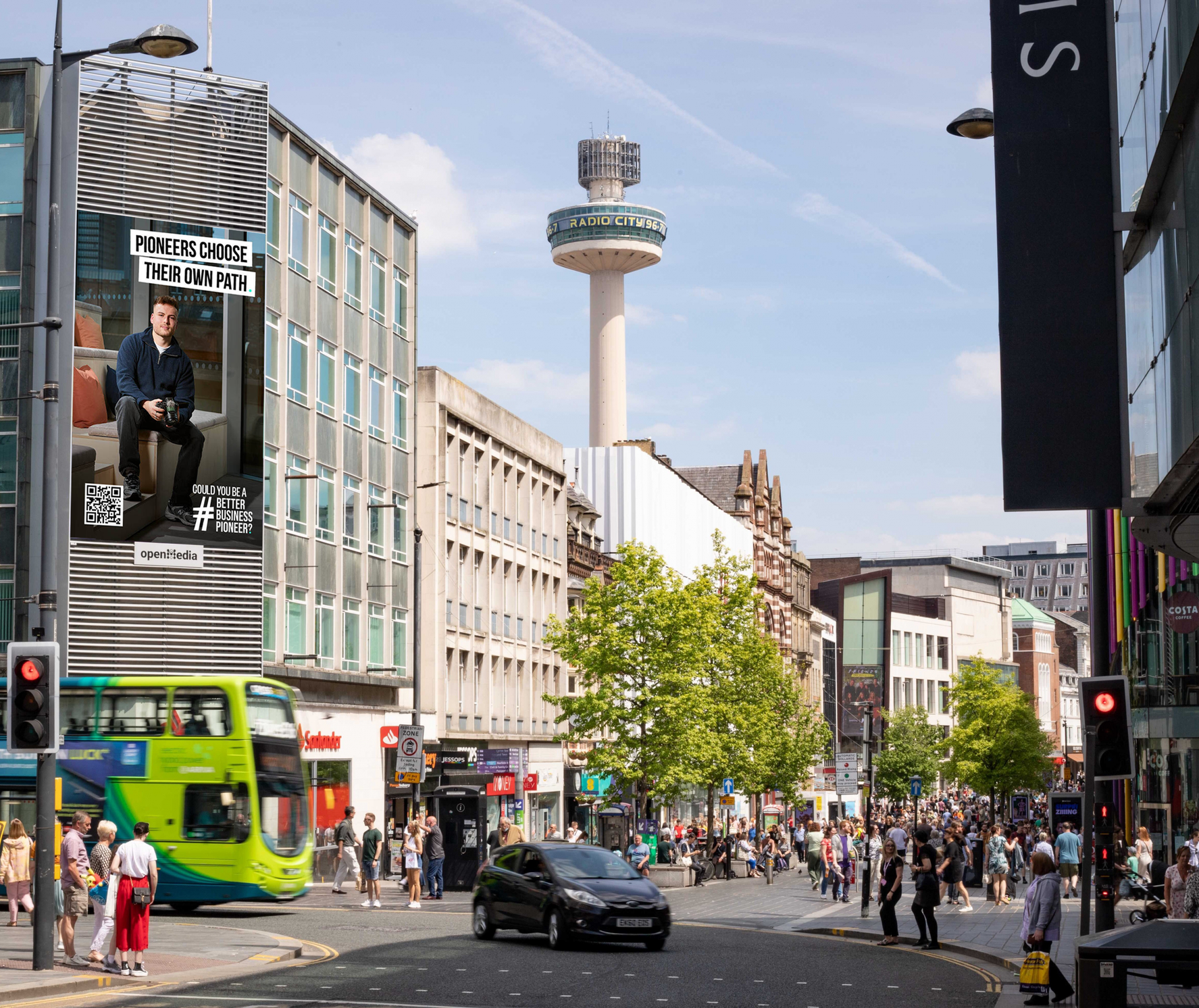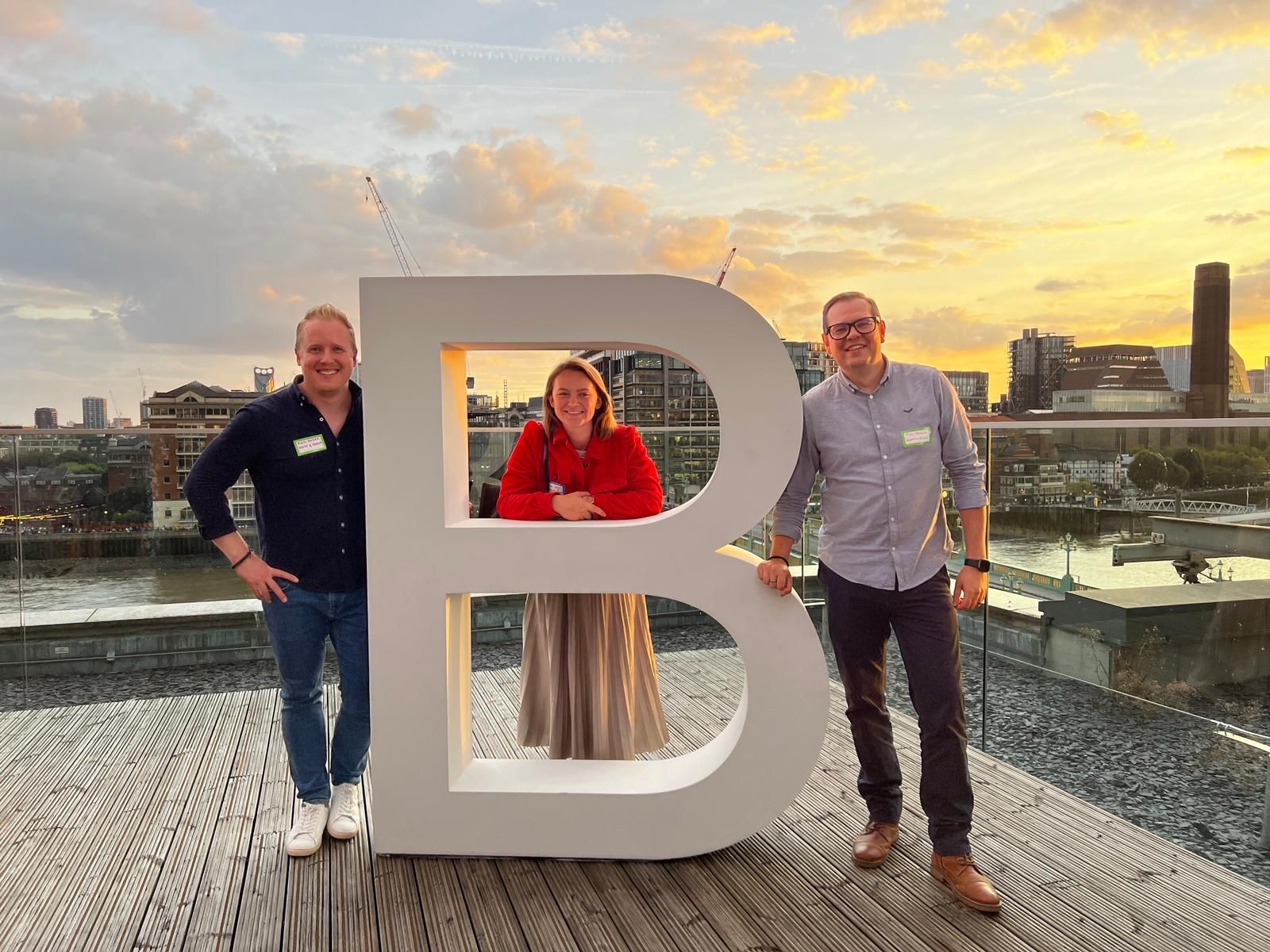Reporting on Reporting: How does UKGBC communicate its impact?
This is the first in a series of several blogs looking at key brands in the built environment sector and how they approach impact reporting. We’ll be looking at design, outcomes, metrics, audience, insights and much more.
Impact reporting is a crucial activity for each and every organisation, but it can also be daunting and overwhelming for a business embarking on its first. The purpose of this blog series is to show the many ways that your company’s impact can be reported and what to look out for along the way.
For instance, is an organisation acting upon its insights? Are they communicating their message clearly? And most importantly of all, are they doing it in a way that is sustainable?
This month's focus:
UK Green Building Council's (UKGBC) Impact Report
UKGBC is a membership-led industry network working hard to radically transform the built environment’s approach to sustainability. Formed in 2007 and driven by over 740 active members, UKGBC aims to positively influence policy and promote solutions that have the ability to transform our buildings, communities, cities and infrastructure for a more sustainable future.
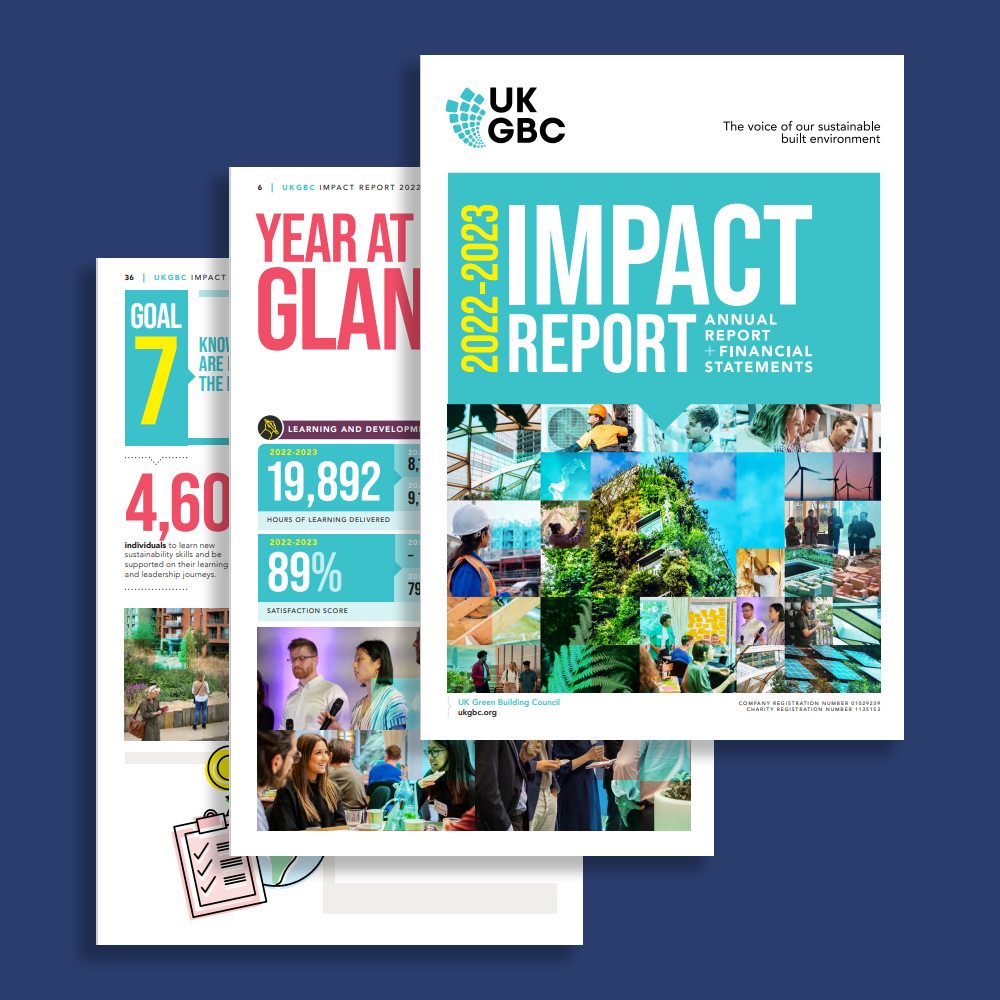
Format + design within the impact report
For the last five years, UKGBC has offered their impact report as a simple PDF download via a dedicated page on their website. Previously years’ reports are also available to download alongside financial statements.
The design of the report takes on an editorial-style approach, with multi-column layouts and bold headlines and callouts. Despite the high page count, we are kept engaged with no shortage of photos, illustrations, graphs, charts and stats. In fact, it’s an incredibly manageable document when you consider the vast amounts of information they’ve chosen to include.
From an accessibility perspective, it’s encouraging to see live text throughout the PDF, which will allow those with accessibility requirements the ability to use a screen reader or other accessibility tools. We do have some concerns around image contrast, with some of the white and light cyan text being lost against grey backgrounds.
Overall, this is an incredibly detailed report, leaving no stone unturned. Interestingly, we would consider this a little cumbersome for most organisations. But this is UKGBC, and the position they are in is one of influence, so you could argue that they must show the utmost amount of transparency when it comes to the multiple activities of their business, which is visibly more complex than many other companies in this sector.
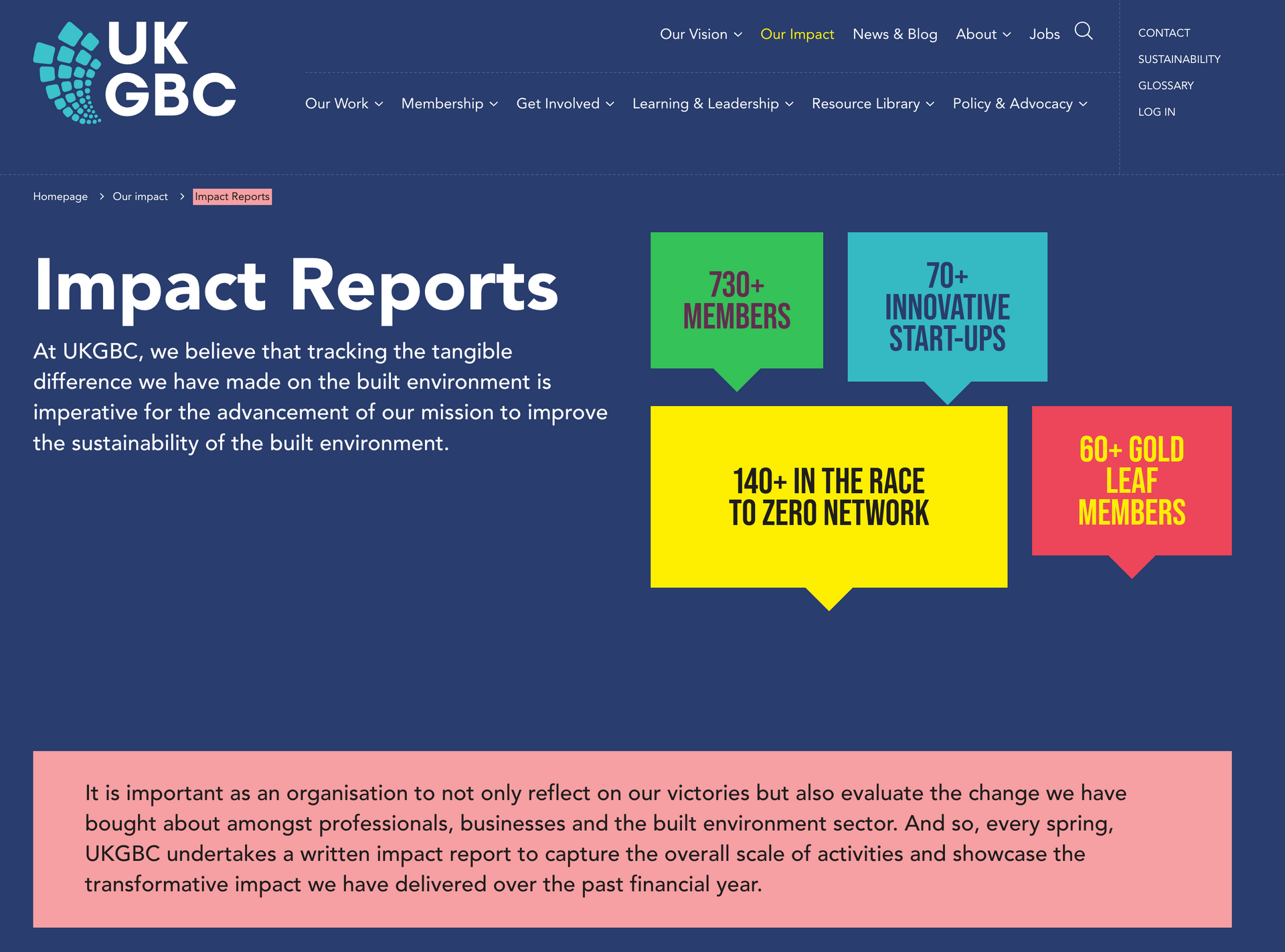
Insights from UKGBC's impact report
Continuing from the previous point, it’s evident that UKGBC’s reporting criteria is one that’s broad and complex. As ‘the voice of our sustainable built environment’, it’s important that they clearly communicate their goals alongside their progress as an organisation. The real weight of this report is certainly in the latter – a clear demonstration of what the company has achieved in the year passed, its 2025 strategy, and the impact that it’s had on its members.
From the introduction all the way through to the final pages, we think it’s fair to say that UKGBC members would not be disappointed, nor could they claim that the report is lightweight or lacking detail. Particular highlights for us include the exceptionally clear goal-setting, which aligns perfectly with UKGBC’s overall mission. We’re also particularly fond of the ‘theory of change’ section, a visualisation of how UKGBC affects change through action.
To summarise the insights, they are aplenty. There’s an abundance of stats covering everything from member scoring, CO2 emissions and biodiversity to download numbers, survey results and expenditure. Our final point is one that we feel is crucial for an organisation of this kind, and that’s 100% financial transparency. UKGBC don’t hold back in this area, with 28 pages dedicated to financial statements, audit reports, cash flow and policies. Complex reading, for sure, but we love to see it.

Identifying your impact reporting audience
UKGBC's audience is a broad cross-section of the built environment sector. These aren't just architects. Their members include local authorities, startups, engineering firms, lenders and even retailers.
Once again, this is a unique scenario which may differ from other sustainability brands that produce impact reports. For instance, Patagonia does exceptionally well in displaying and communicating its sustainable credentials, but looking to pin down their audience type? That's a tough job.
UKGBC's members have all opted in, and therefore we can assume that they have strong expertise and understanding in this sector. This means that the report can afford to be a little more technical and complex than most.
Language is clear and concise (despite the size of the report), and it's also optimistic and encouraging, doing well to explain the challenges that we face but also the hope and promise of what members can achieve by working together.
Introductions and quotes also bring a personable feel to the report, which is further amplified by high-quality photos of key contributors.
Quantitative + qualitative metrics
In this section we will look at the data that the organisation has chosen to report on. We feel that this level of study is important, because an impact report isn't all about the numbers – we also need to see more nuanced examples of how an organisation is making an impact.
UKGBC offer deep insight into each and every activity and measurable, truly leading by example in what it means to make an impact.
What we really like here is how they've used their seven-goal structure as a base, and mixed quantitative and qualitative information within these chapters. All too often, impact reports can group their stats together in an overwhelming array of numbers, overshadowing more anecdotal and qualitative examples of their work.
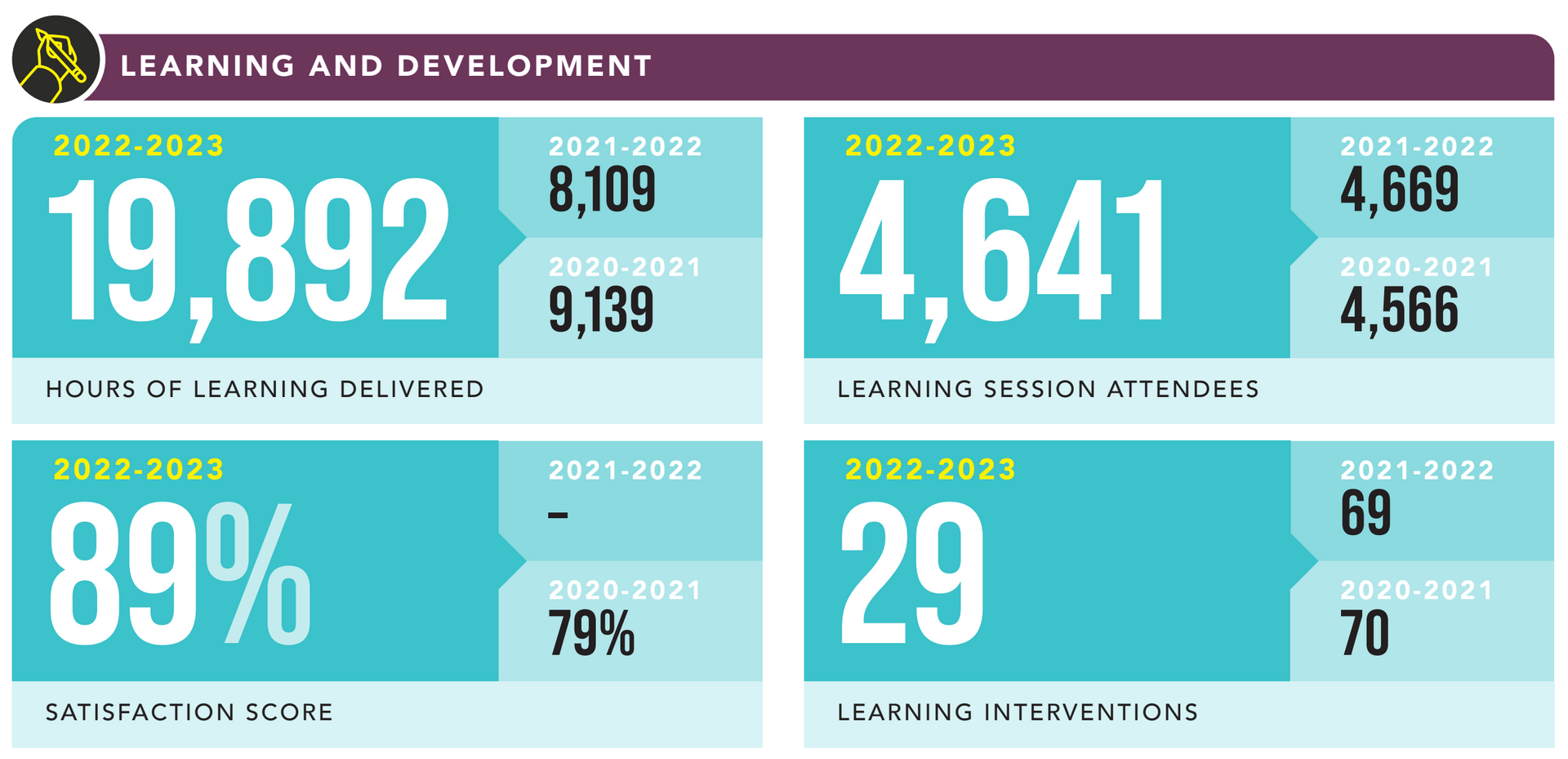
Tracking progress in UKGBC's impact report
Of course, you can have the most data-laden, beautifully-designed, accessible impact report only for the numbers and narrative to lead absolutely nowhere. Thankfully, this is very rarely the case. There are very few businesses that would go through the process of producing and publishing an impact report if they had no appetite for progress when it comes to a better built environment, or any sector for that matter.
That said, it is important to validate impact reports and ensure that organisations aren’t resting on their laurels or just scraping by with the bare minimum. Throughout this series, we will be looking back over companies’ previous reports to analyse progress and identify positive outcomes. An example of this might be a marked improvement in a particular metric, or the success of a program or scheme.
UKGBC get full marks from the outset in making their previous years’ reports available for download by displaying them on a single, accessible site. From a usability point of view, this is an effective way to create an audit trail for anyone interested in their progress over the years.
As we delve deeper into each report, we are pleasantly surprised to see a ‘year in numbers’ section which goes back as far as 2020 to give us a clear view of growth metrics such as active members, engagement opportunities, social media audience and website users. In all cases, there is quantifiable improvement.
The clear illustration of progress is less obvious elsewhere in the report, but that’s not to say it’s missing. We have to dive deep into the text-heavy narrative to truly understand how UKGBC are progressing in their individual goals. Whilst there are some useful stats at the end of several chapters (with a convenient arrow to show increases and decreases), we’d love to see a paragraph or two setting out the previous year’s challenge and how it’s shaped the organisation's efforts over the last twelve months.
This is just a small change which would make a big difference to those glancing through the report. As we delve into the financial reporting section of the report, the same can be said for historical numbers, with the various tables only showing a 2022 to 2023 comparison.

Setting goals in impact reporting
Finally, looking ahead. A report is, of course, about looking at current achievements and progress, but a significant part of the report should address goalsetting and the organisation's future. Audiences want to see a roadmap for the future, particularly in a sector undergoing rapid growth and change.
It’s top marks all-round once again, with a ‘year ahead’ section addressing the green movement and the empowerment that UKGBC instils in its members, as well as encouraging comments around government taskforces and Whole Life Carbon Roadmaps.
And as mentioned earlier in our findings, there is a clear 2025 strategy overview, which signposts the organisation’s journey into the future, including some valuable insight into who UKGBC plan to collaborate with, their impact areas, and the change that they want to see in the next couple of years.
A summary of UKGBC's Impact Report
Well, it would be hugely surprising and disappointing if the UKGBC impact report was a letdown. They are in a position that many look to for best practice – shaping the future of the built environment and creating an invaluable community of members all unified in their pursuit of a greener sector.
In our view, UKGBC has set a high bar when it comes to impact reporting and with only a handful of minor improvements, we feel that their methodology and presentation are a solid nine out of ten.
Who’s up next? Keep your eyes open for your next
‘Reporting on Reporting’ blog to find out.
Share the love

